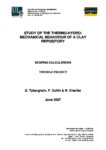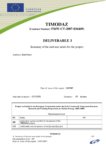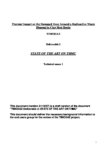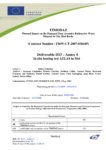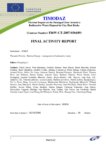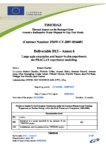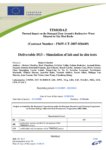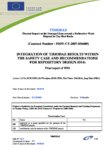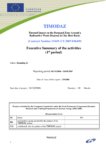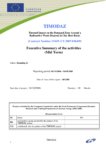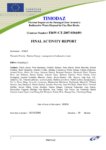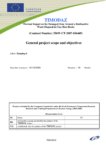TIMODAZ: Thermal Impact on the Damaged Zone Around a Radioactive Waste Disposal in Clay Host Rocks
The TIMODAZ project was a four-year project investigating the thermal impact on the damaged zone around a radioactive waste disposal facility in clay host rocks.
Overview
Project Dates: 01/10/2006 – 30/09/2010
Project Status: Finished
Project Website: http://www.timodaz.eu
An important item for the long-term safety of underground disposal is the proper evaluation of the Damaged Zone (DZ) in the clay host rock. The DZ is first initiated during the repository construction. Its behaviour is a dynamic problem, dependent on changing conditions that vary from the open-drift period, to the initial closure period, to the entire heating-cooling cycle of the decaying waste. Other factors concern the even longer-term issues of chemical reactions and biological activities.
The TIMODAZ project focussed on the study of the combined effect of the EDZ (Excavation Damaged Zone) and the thermal impact. The influence of the temperature increase on the EDZ evolution, as well as the possible additional damage created by the thermal load, was studied.
Three types of clay were investigated: the Boom Clay, the Opalinus Clay and the Callovo-Oxfordian argilite. To assess the impact of the different repository evolution stages on the host rock, numerical tools were developed allowing a good prognosis of the Thermo Hydro Mechanical and Chemical (THMC) host rock behaviour at the time- and spatial-scale of a repository. These developments built on an experimental programme including laboratory and insitu tests. The knowledge gained within the project allowed an assessment of the significance of the TDZ (Thermal Damaged Zone) in the safety case for disposal in clay host rocks and provided direct feedback to repository design teams.
In order to ensure appropriate and continuous linkage between the end-users’ needs and the priorities of the project, an end-users’ group was active throughout the duration of the project. The end-user group consisted mainly of national agencies for management of radioactive waste. In total, 15 participants from eight countries were involved.
Objective
The TIMODAZ project aimed to answer the following key questions:
- What will be the clay evolution around a disposal system of heat-emitting waste during the thermal period?
- What are the uncertainties on the evolution of the EDZ and TDZ? How can these uncertainties be dealt with?
- How are the clay properties modified as a result of the thermal, mechanical and chemical conditions during the thermal period?
- Under which temperature conditions do the changes in clay properties become irreversible?
- What is the extent of the alterations from a performance assessment point of view?
Seven work packages were set up to allow these questions to be answered.
- WP1 – project management
- WP2 – data review priority set up for end users
- WP3 – laboratory experiments
- WP4 – in situ experiments
- WP5 – modelling
- WP6 – significance of TDZ in safety case input for design
- WP7 – training and dissemination



